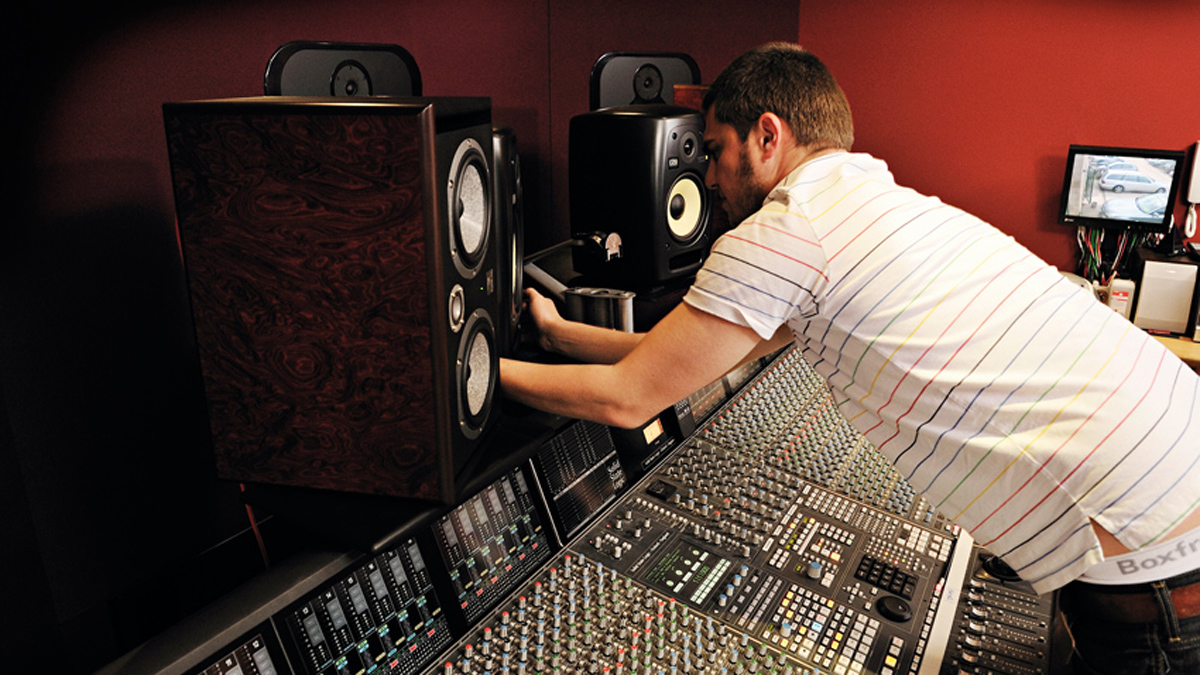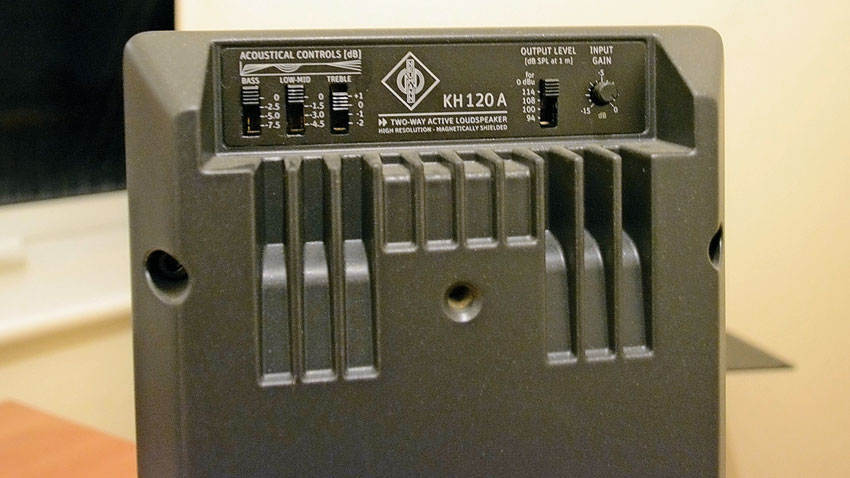Get a better home studio monitoring setup with these 8 key tips
Hear what you're doing in the studio more accurately than ever with our tips and tricks

Producing or mixing music successfully is down to lots of different factors - not least, the sound we hear from our studio monitors.
Lots of the most common problems that arise when tracking, producing or mixing, such as incorrect bass/treble levels or poor stereo imaging, can be traced to how we're perceiving the sound that comes from your speakers.
Bearing this in mind, it's really important to make sure our monitoring is set up to deliver the most accurate sound possible… after all, it's pointless having a great setup and honed production skills without being able to hear what's going on in the mix!
Here, we present an octet of tried and tested techniques for getting the best out of any monitoring system.
- Explore the best studio monitors you can buy right now
1. Wedge it - or not
Foam wedges such as Mopads might seem like an easy way to isolate your monitors from the surface they are sat on, but they can actually make matters worse by allowing your monitors more leeway to move around - while the foam will reduce transmission of bass resonances, the instability can negatively affect your stereo imaging.
2. Keep your ears fresh
Monitoring too loudly is a surefire way to tire your ears out during a long studio session - not only that, but listening at excessive SPLs can affect our perception of bass and treble levels according to the Fletcher/Munson theory, making it harder to get those vital areas of the mix sounding tight.
Calibrating your monitoring using Bob Katz's K System, so that you make all your mix decisions at around 85dB SPL, will ease ear fatigue while helping to achieve more consistent results when mixing - all without spending a penny on new gear or plugins!
Get the MusicRadar Newsletter
Want all the hottest music and gear news, reviews, deals, features and more, direct to your inbox? Sign up here.
3. Out with the tiles
Using too many egg-box style acoustic tiles can do more harm than good - not only do they not deal with low frequencies, but they also dull high frequencies, potentially leading to a mix with ear-bashing treble!
4. Pick your spot
It pays to make sure your monitors are in the most symmetrical spot in your room, with as even a distance between walls as possible. This will make the sound reflections from each speaker more even.
Another good tip when using a rectangular room is to make sure your speakers face towards the longest dimension of the room to minimise the effect of unwanted reflections from the wall behind the listening position.
Finally, don't put your monitors in an alcove! It sounds obvious, we know, but you'll get an excessive amount of bass reflections from such positioning, making critical listening much more difficult.
5. Weight for it…
If your monitors kick out a lot of bass, place some heavy weights on top of them. This will reduce any subtle movement or cabinet vibration caused by low frequencies, giving a sharper stereo image and increased low-end definition.
6. Wire 'em up
Improve the sound of your speakers by looking at their wiring. Using balanced audio cables can make a big difference; not only will the signal from the audio interface to the speakers be 3dB louder (giving an improved signal to noise ratio), but balanced audio systems use phase cancellation to minimise unwanted noise picked up from nearby electrical wiring or appliances.
If you have to use unbalanced audio leads, keep the cable lengths short and audio leads separate from power cables. If that's not possible, crossing them over at 90 degree angles will minimise interference.
7. Improve your room
While dedicated acoustic treatment such as bass trapping, diffusion and isolation is usually the best bet for taming an unruly listening space, big improvements can be obtained by using some everyday household objects in the right way.
Books, DVDs, records and CDs can make effective DIY diffusers when placed randomly on a shelf behind the listening position. Reduce unwanted reflections by covering your room's window with thick curtains (second hand theatre drapes, for example), or stitching a duvet to the backs of your existing curtains.

8. Use your EQ
Most active monitors feature controls on the back to adjust their sound depending on what space they're located in. As well as the usual gain control, you can usually adjust the bass and treble levels.
Now, we'd not recommend using these just to shape the sound of your speakers, as you're effectively switching an EQ circuit into the signal path, thereby decreasing quality and messing around with the frequency response. However, if your mixes are consistently unbalanced in the highs or lows, then compensating with these controls can help deliver more repeatable results.
For example, if your mixes are too bass-heavy, try turning the bass down by 1dB to make it sound lighter when mixing, meaning you'll most likely have more bass in your final mix. As with any EQ, though, boosting bass/treble will introduce phase distortion into the signal, so cutting to achieve the same result will sound better, preserving more of the signal's purity.
Future Music is the number one magazine for today's producers. Packed with technique and technology we'll help you make great new music. All-access artist interviews, in-depth gear reviews, essential production tutorials and much more. Every marvellous monthly edition features reliable reviews of the latest and greatest hardware and software technology and techniques, unparalleled advice, in-depth interviews, sensational free samples and so much more to improve the experience and outcome of your music-making.










